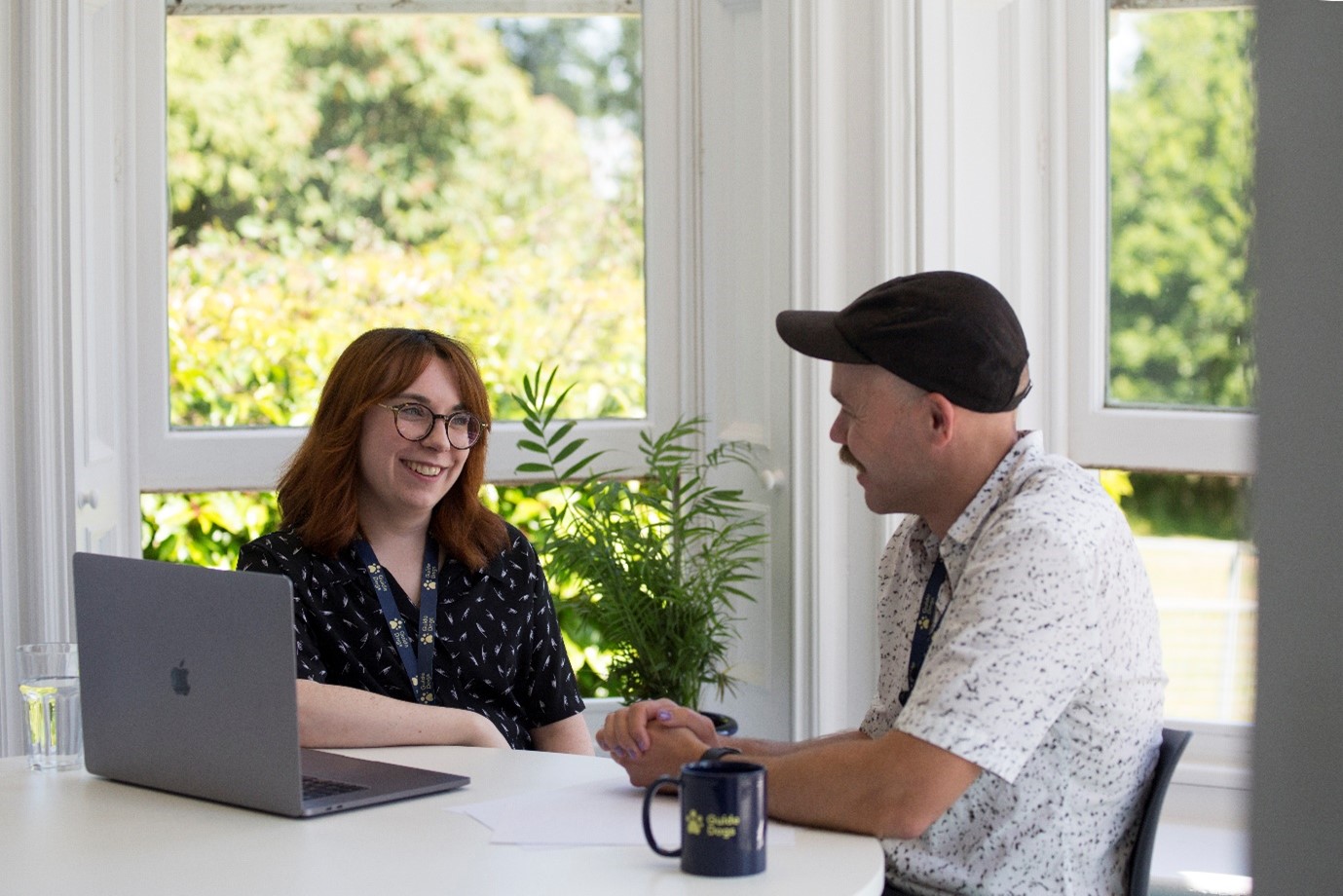
Global Accessibility Awareness Day (18 May 2023) launched in 2012 to shine a spotlight on digital accessibility and inclusion for people with disabilities. The GAAD Foundation was formed in 2021, celebrating a decade of GAAD. Their mission is to ensure everyone has the same access to and experience of web-based services, content, and other digital products.
Digital technology is increasingly becoming a necessary part of everyday life – making calls, reading emails, using transport tickets, and ordering groceries. With 14.1 million people in the UK living with a disability, including more than two million with sight loss, digital accessibility and inclusion has never been more essential.
Digital accessibility for people with sight loss
Assistive technology can support people with sight loss to access digital information and operate devices such as mobile phones, laptops, tablets, and PCs easily. There are many hardware and software options, and an increasing amount of available in-built accessibility settings within the devices themselves.
Alex Pepper - our Head of Accessibility at Guide Dogs - lost his sight several years ago. He shares his experience of digital accessibility and the impact it has on his day-to-day life: "Good digital accessibility is so important. For me, my mobile phone provides accessibility features that are a total game-changer in my personal life. I am able to use features such as VoiceOver on my iPhone which enable me to do things easily and independently – I can quickly send and read text messages, use my banking app, and even check the weather so I know what to wear. This feature makes the world of difference as I would really struggle to do these things on my own with no vision. I would encourage everyone, not just people with sight loss, to have a look on your mobile phone and play around with the accessibility features – there is so much that people don’t know about that can have such a huge impact!”
Some common assistive features include:
Voice control – voice control enables users to easily navigate their mobile phone or other device, quickly and easily giving simple voice commands to skip through menus.
Text-to speech – text-to-speech and speech-to-text is a feature available on most modern mobile phones and devices which enables users to ‘read’ by converting any written text into spoken word, and ‘write’ text using their voice to give commands.
Alt Text – providing descriptive text about any images, banners, or buttons enables people with sight loss to understand what is featured on the screen.
Keyboard accessibility – many people with sight loss do not use a mouse to navigate their computer screen as this requires hand-eye coordination. Instead, they use keyboard shortcuts allow users to move around websites and their device.
High contrast colours – having highly contrasting colours enables users to view text and other items much more clearly. For users with limited sight, this can enable them to view a site without the use of additional software.
Adaptations for other disabilities include:
Hearing – captioning and the use of visual rather than auditory cues can help people who are deaf or hard of hearing to access video content.
Motor – eye control and adaptive hardware options can help people who struggle with motor movements to navigate the screen,
Cognitive – uncluttered screen layouts and consistent page structure can help people with cognitive impairments to navigate websites more easily.
You can find our accessibility statement on our website.
Accessible support for people living with sight loss
At Guide Dogs, we provide a range of accessible support for people living with sight loss. Check out our Information and Advice pages which include topics such as how to get around safely, eye conditions and eye health, and much more information about assistive technology and apps that can support people with a vision impairment.
If you’d like further information or guidance about our services for adults and children, please contact Guide Line.
Want to know more about GAAD?
You can find out more about Global Accessibility Awareness Day and the GAAD Foundation from their websites, including details of events, activities, and how to show your support for digital accessibility and inclusion.
